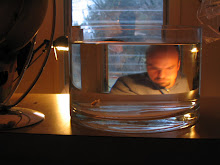About a year ago, Salon ran an interview with the Phish guitarist Trey Anastasio, on his attitudes toward improvisation - a subject that turns out to be centrally important to his musical practice. In it, he mentions a wide range of precedents and examples, and even contends that he feels freer while playing the guitar than he does in ordinary conversation. But perhaps the moment I enjoyed most was his allusion to a single note, in a tune by Hendrix:
I started listening to improvisational music when I was in high school. Before that, I was more interested in composition. I listened to “West Side Story” and Sly & the Family Stone — really listening to their arrangements and how they laid all the melodies. But, in that way, good improvisation has a structure. It has a form. I remember, like many guitarists, being obsessed with Hendrix’s Band of Gypsys. It was the record.
I listened to that solo on “Machine Gun” a million times.
With that one amazing note.
Yeah, the note!
What's that note? Ah, folks: the Internet gives, and it gives some more. But while you're waiting for that solo - "the greatest note ever played!" - you might also mull over the assertion of Elizabeth Peterson, a fourth-grade teacher who keeps a blog on education. "Everyone," she writes, "should have the opportunity to reflect on how the beauty of improvisation can play a part in our daily lives, both personal and professional. Imagine if we could all learn to improvise alone and in collaboration with others."
We're trying, Elizabeth. The last two afternoons, lovely lambent exercises in autumn skies, Cleo and I have simply wandered sidewalks after school, finding impromptu balance beams, studying puddles, and making pretend mint leaves from maple trees. Our notes may not be amazing, to the outside ear, but I'm already looking forward to whatever unpredictable form this afternoon might bring.
.JPG)




No comments:
Post a Comment